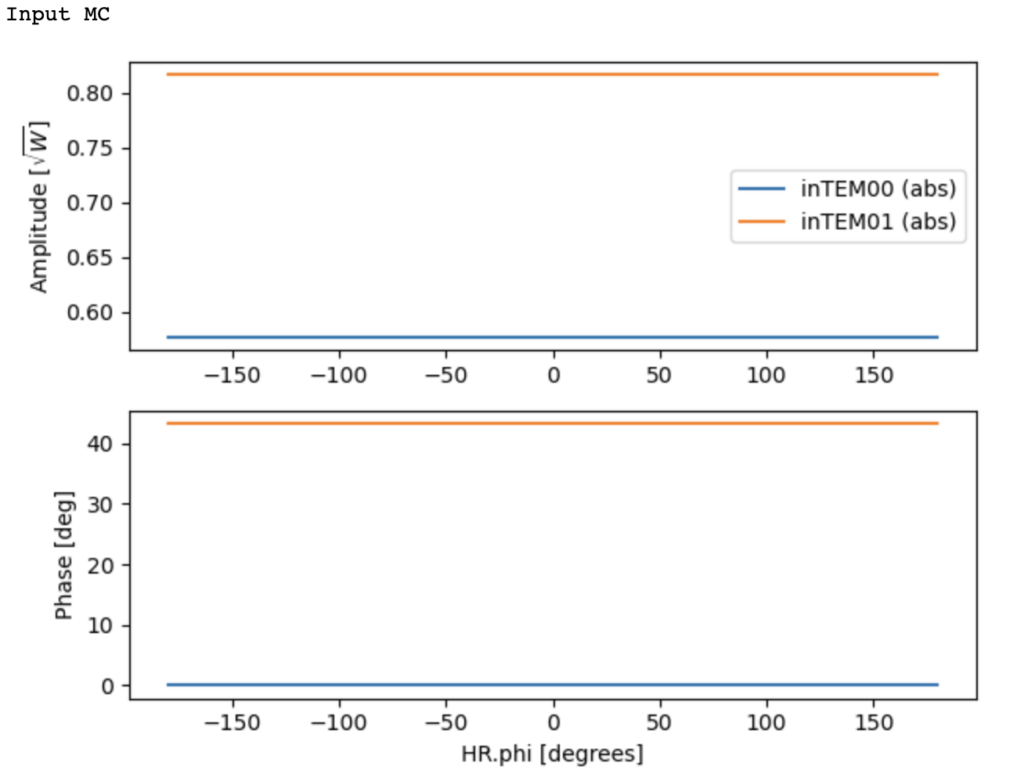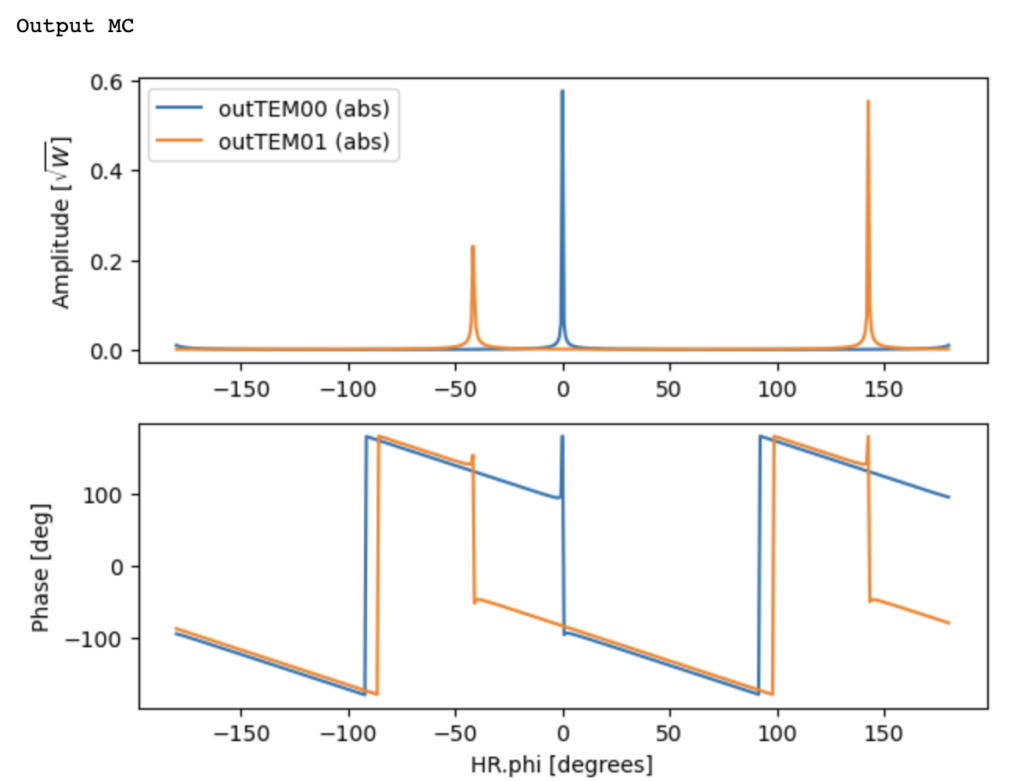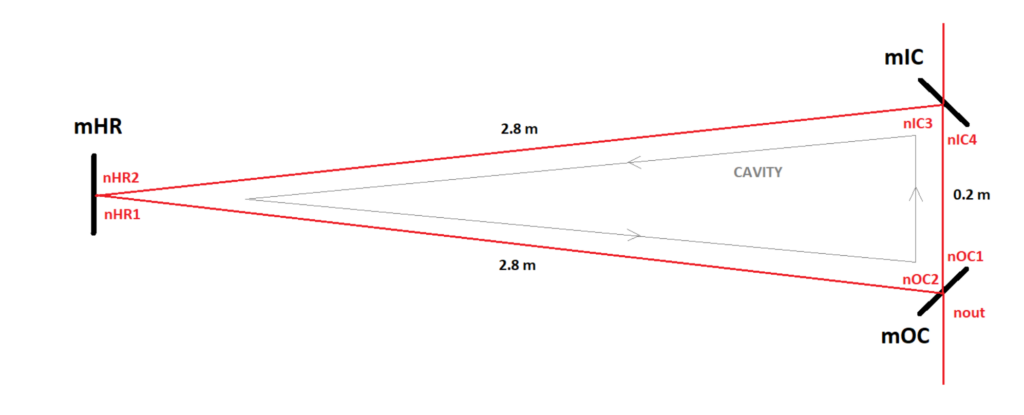For analysing the performance of a Mode Cleaner (MC) we need a “dirty” Beam as an input to make sure that our MC is filtering out higher order modes.
To create a dirty beam we first add a laser to our system, than enable higher modes and add a mixture of new and higher order modes
l laser1 P=1 # input laser with P = 1.0 W
modes(maxtem=1) # allow higher order modes, here up to order 1
tem(l1, 0, 0, 1, 0.0) # TEM00 mode with P=1/3 Laserpower at 0 phaseshift
tem(l1, 0, 1, 2, 45.0) # TEM01 mode with P=2/3 Laserpower at 45 phaseshift To define detectors before and after the cavity (see cavity below) we add a amplitude detector at the Input and output of our cavity, with specific detection modes
#INPUT
ad inTEM00 IC.p1.i f=0 n=0 m=0 #Amplitude detector for TEM00 at IC input
ad inTEM01 IC.p1.i f=0 n=0 m=1 #Amplitude detector for TEM01 at IC input
#OUTPUT
ad outTEM00 OC.p4.o f=0 n=0 m=0 #Amplitude detector for TEM00 at OC output
ad outTEM01 OC.p4.o f=0 n=0 m=1 #Amplitude detector for TEM01 at OC outputWhen plotting these Detectors we can see a dirty input beam with a lot more TEM01 mode in it. When ramping through the HR.phi we can see that the cavity is resonant for each mode at different stages


The setup
For the simulation above to work we have to define the rest of the cavity with the different mirrors and spaces, here I added an old triangle MC design for ETPF that was designed by Annabel Wolf as a Master Thesis “Optical System Design of the Einstein Telescope Pathfinder”

Here is the code for those who are interested
bs IC T=0.0025 L=0 alpha=83.90625 #IC mirror
bs OC T=0.0025 L=0 alpha=83.90625 #OC mirror
bs HR T=10e-6 L=0 alpha=12.1875 Rc=6.7 #HR curved mirror
s s1 l1.p1 IC.p1 L=0.1 #Laser -> IC
s sBase IC.p3 OC.p2 L=0.2 #IC -> OC
s sSide1 IC.p4 HR.p1 L=2.8 #IC -> HR
s sSide2 HR.p2 OC.p1 L=2.8 #HR -> OC
cav MC IC.p4 #building the cavity